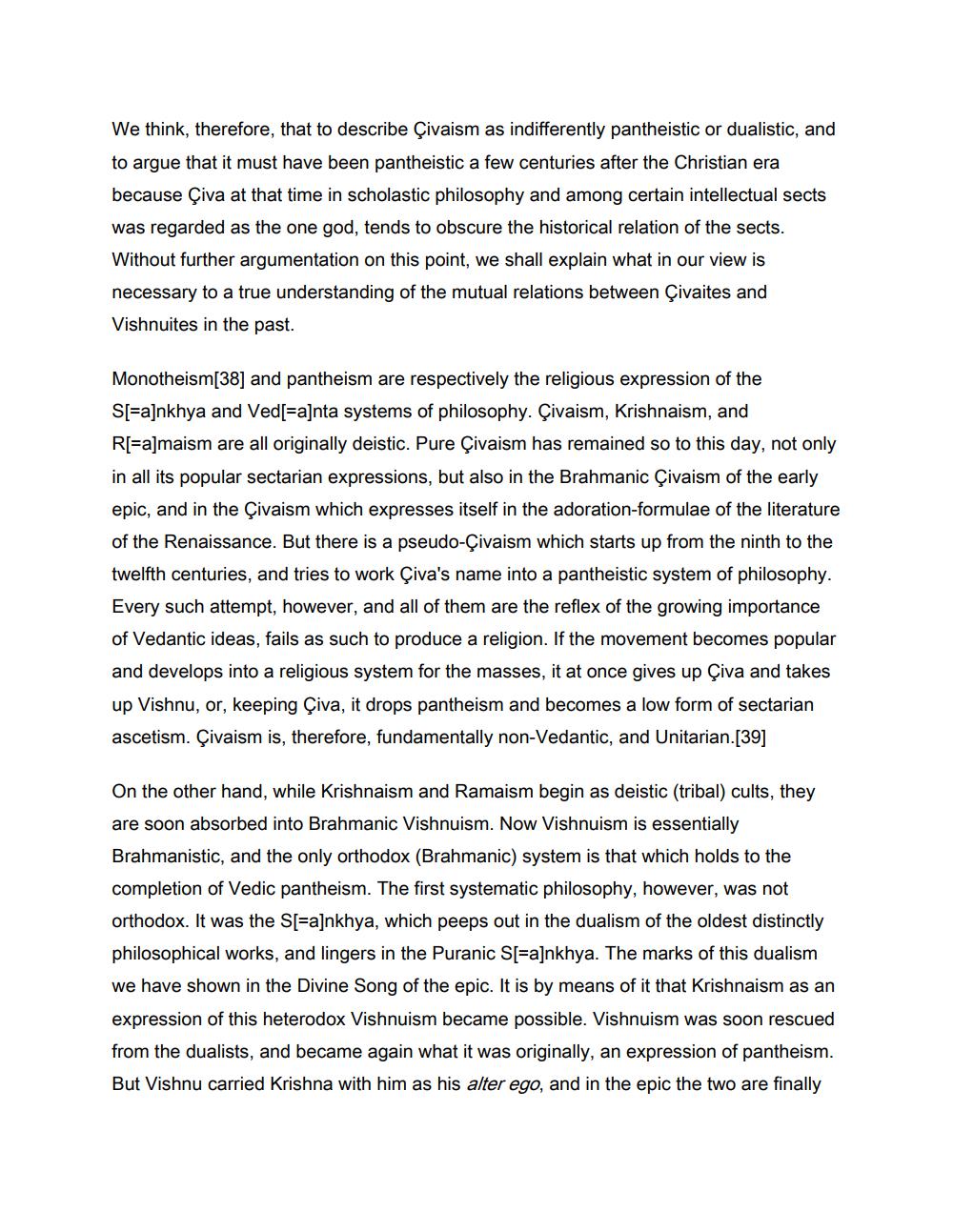________________
We think, therefore, that to describe Çivaism as indifferently pantheistic or dualistic, and to argue that it must have been pantheistic a few centuries after the Christian era because Çiva at that time in scholastic philosophy and among certain intellectual sects was regarded as the one god, tends to obscure the historical relation of the sects. Without further argumentation on this point, we shall explain what in our view is necessary to a true understanding of the mutual relations between Çivaites and Vishnuites in the past.
Monotheism[38] and pantheism are respectively the religious expression of the S[=a]nkhya and Ved[=a]nta systems of philosophy. Çivaism, Krishnaism, and R[=a]maism are all originally deistic. Pure Çivaism has remained so to this day, not only in all its popular sectarian expressions, but also in the Brahmanic Civaism of the early epic, and in the Civaism which expresses itself in the adoration-formulae of the literature of the Renaissance. But there is a pseudo-Çivaism which starts up from the ninth to the twelfth centuries, and tries to work Çiva's name into a pantheistic system of philosophy. Every such attempt, however, and all of them are the reflex of the growing importance of Vedantic ideas, fails as such to produce a religion. If the movement becomes popular and develops into a religious system for the masses, it at once gives up Çiva and takes up Vishnu, or, keeping Çiva, it drops pantheism and becomes a low form of sectarian ascetism. Çivaism is, therefore, fundamentally non-Vedantic, and Unitarian.[39]
On the other hand, while Krishnaism and Ramaism begin as deistic (tribal) cults, they are soon absorbed into Brahmanic Vishnuism. Now Vishnuism is essentially Brahmanistic, and the only orthodox (Brahmanic) system is that which holds to the completion of Vedic pantheism. The first systematic philosophy, however, was not orthodox. It was the S[=a]nkhya, which peeps out in the dualism of the oldest distinctly philosophical works, and lingers in the Puranic S[=a]nkhya. The marks of this dualism we have shown in the Divine Song of the epic. It is by means of it that Krishnaism as an expression of this heterodox Vishnuism became possible. Vishnuism was soon rescued from the dualists, and became again what it was originally, an expression of pantheism. But Vishnu carried Krishna with him as his alter ego, and in the epic the two are finally




